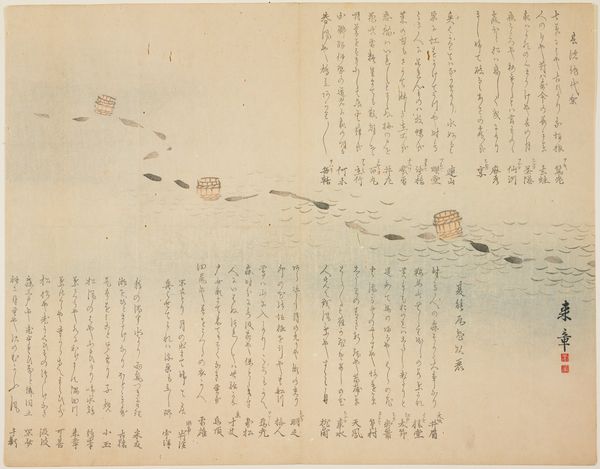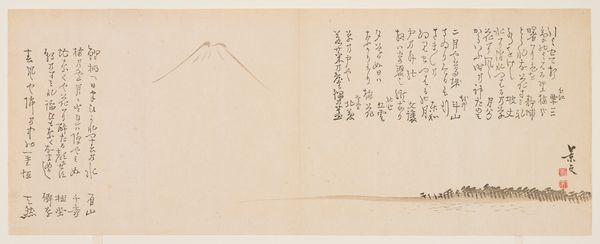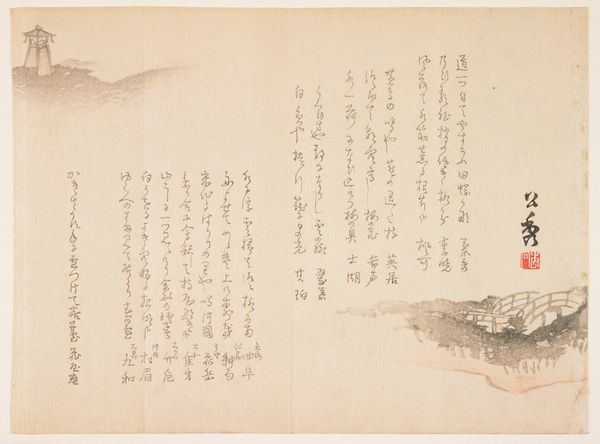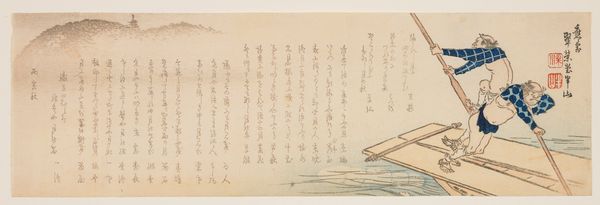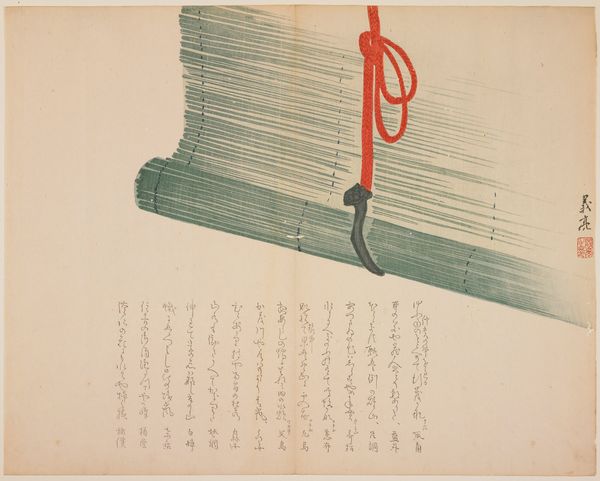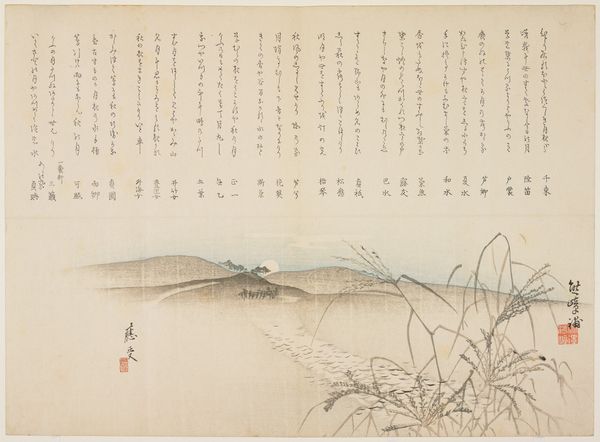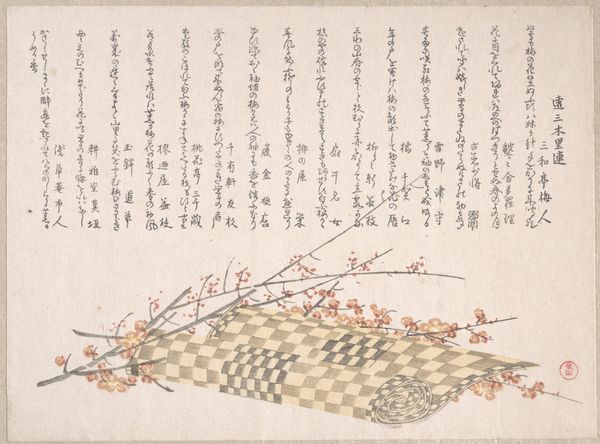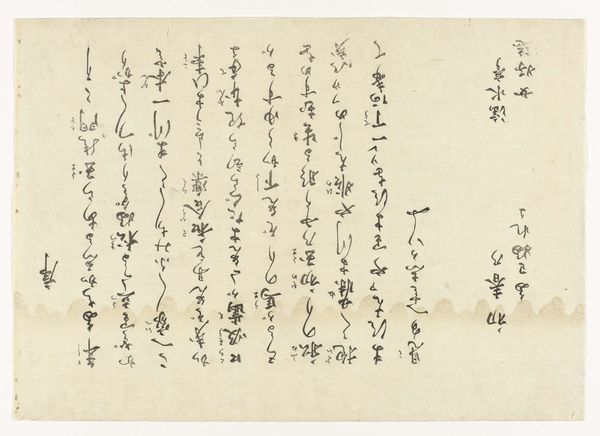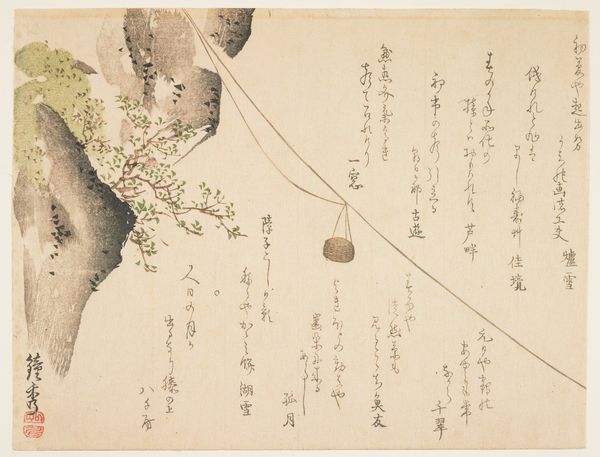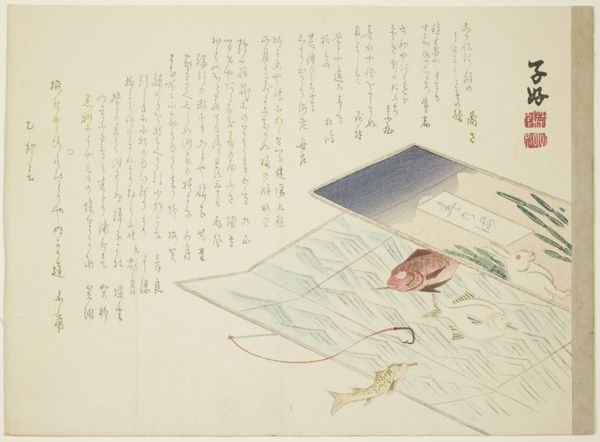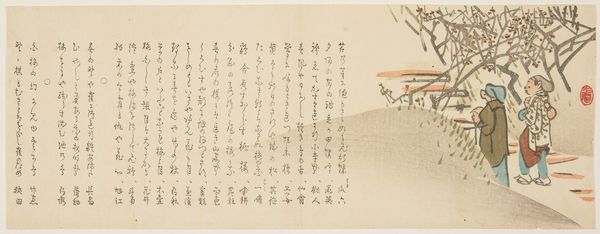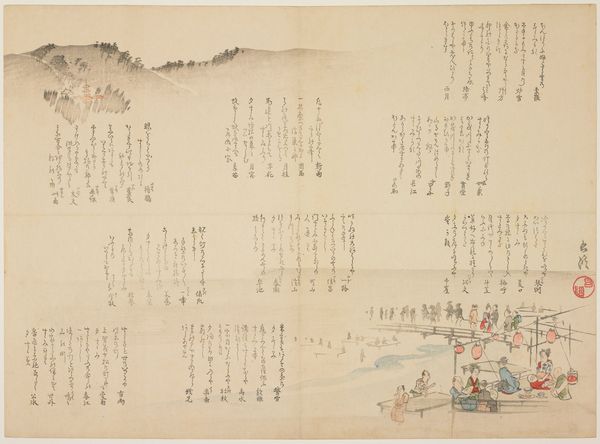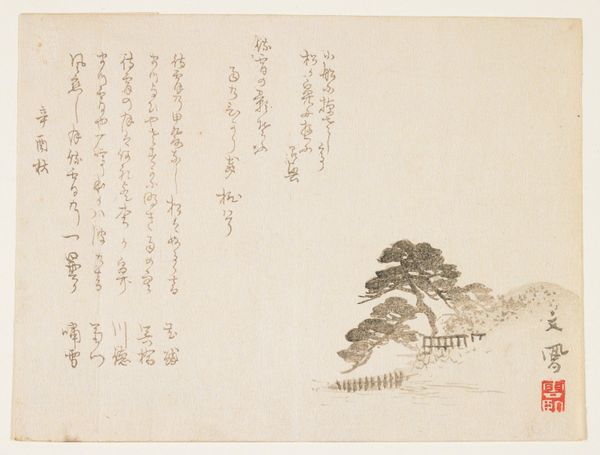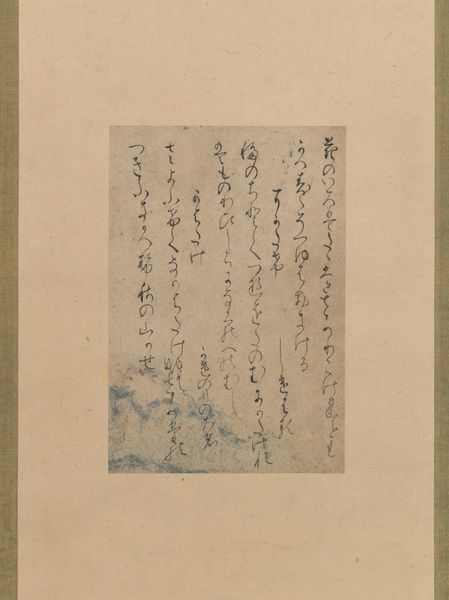
Dimensions: 7 1/2 x 10 1/8 in. (19 x 25.7 cm) (image, sheet)
Copyright: Public Domain
Editor: This lovely and delicate etching is titled "(Shore Pilings)," created in 1889 by Shōkitsu. The piece combines watercolor and ink, resulting in an airy, dreamlike quality. All of the characters almost float on the page. How do you interpret the combination of text and image in this work? Curator: I think the integration of text with image is key here. Consider the socio-political context of Meiji-era Japan, where traditional art forms like ukiyo-e were navigating new relationships with Western art and modernization. The text, likely a poem, elevates the mundane shore pilings, investing them with cultural meaning. Are these pilings simply a subject, or do they stand for something more in that context? Editor: I see what you mean. So the pilings themselves might be a representation of something bigger about that time in history. They look like markers – or even maybe remains? Curator: Precisely! They evoke a sense of place and history, resonating with nostalgia for a past Japan while simultaneously existing within a rapidly changing present. Consider the public role of such images - they aren’t just pretty landscapes. Instead they solidify a shared sense of cultural identity and, maybe, hint at a gentle resistance against complete Westernization. It prompts questions about who gets to define "progress." Editor: That makes so much sense. I hadn’t considered the tension between tradition and modernity, but viewing it in that light really opens up new interpretations. Curator: It's a powerful commentary, isn't it? It exemplifies how art operates within a broader framework, constantly negotiating historical forces. Editor: This makes me look at Japanese prints in museums with a totally new perspective, beyond just appreciating the aesthetic. Thanks!
Comments
No comments
Be the first to comment and join the conversation on the ultimate creative platform.
